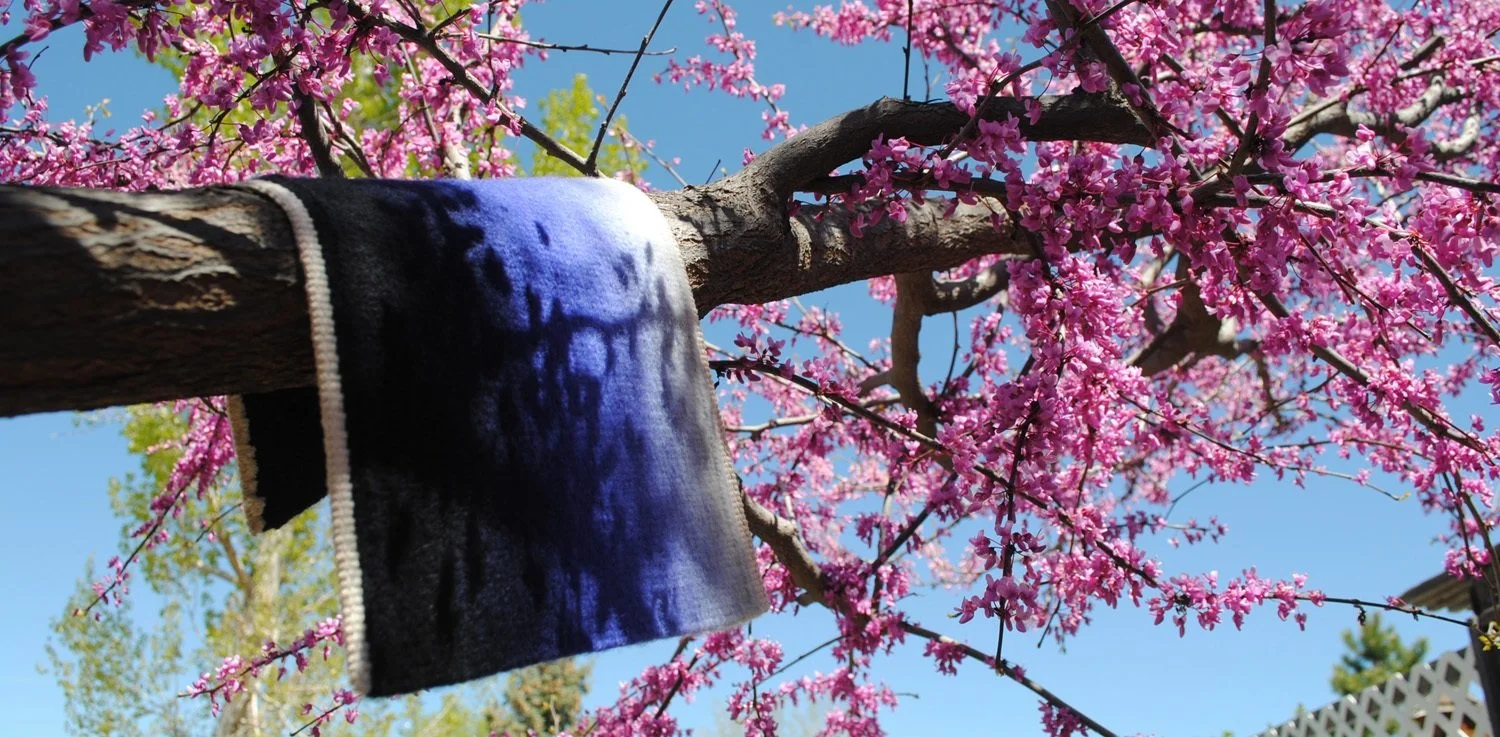We had a great retreat in Taos. Spinning for Tapestry is a fun subject and my co-teacher Jillian Moreno* is so much fun to work with and learn from! I always pick up new tips from her. For example, this retreat was about color and involved a lot of parallel drafting. Talk about magic!!
Schacht Arras treadle assembly
I have been weaving on the Schacht Arras tapestry loom for several years now. They have released a stand and treadle assembly for the loom which I have been using for most of a year now and I really love it.
The treadles don’t work without the stand so you do have to purchase both the stand and the treadle assembly to make the whole thing work. The treadles are manual meaning that they work with a pulley system and don’t need to be plugged in. They glide easily and are very quiet.
A tapestry show catalog round-up
I have been unable to get to any tapestry shows in the last few years for various reasons. But I am an avid collector of catalogs because I find it a great source of inspiration for my own work and I love to see what other people are doing in tapestry. The catalogs below are recent acquisitions.
Catalogs are definitely not the perfect representation of a piece of art, but I find them very useful for getting ideas, celebrating artists I do know, and learning about artists I didn’t know about. I have quite a collection and I find that when I’m stuck for ideas for whatever reason, going back through old catalogs is really helpful!
I hope this brief review of these catalogs is inspiring enough for you to get your own copy and perhaps start your own catalog collection!
Continuous tapestry warp and tight selvedges: This is the knot to use.
There are only a few things that I’d say regularly frustrate new tapestry weavers and one of them is the final knot on the warping bar of a continuously warped tapestry loom. If that last knot doesn’t hold tightly, then your edge selvedge will be loose which affects your weaving. Using a double half-hitch knot allows you to adjust the tension on that last warp with a knot that will hold.
Continuous warping
What does that mean? A continuous warp is one which wraps around the outside of a tensioned frame loom. Some common examples of this type of loom are the Schacht Arras and most Mirrix looms. These looms use a warping bar. The bar gives you a place to tie the beginning and ending warp securely as well as a rigid structure to help you turn the tapestry around the loom without distorting it. This type of loom can produce a tapestry that is longer than the loom is high.
Messing around with natural dyes
I had another Bluebird dye day this week, quite literally. I’ve been taking some dye classes from Laurie Hall of Bluebird Dye Gardens. The day was beautiful with blue skies and there were bluebirds all around her studio!
Before going back for more shibori and resist dyeing, I had to mordant more fiber. I had to order some supplies from MAIWA and by the time it all came together, it was the day before the dye day. So much for having time to do some shibori stitching before getting there! But I was able to get the fabric mordanted and felt quite happy that I did it successfully.
Weaving amongst the cows
I love visiting a beautiful place repeatedly over time. One can learn a lot about a place by seeing it in different lights and seasons. There is a huge area of dispersed camping and trails about 20 miles from my house in the La Plata Mountains. I spotted a nice weather window over the weekend and loaded up the car for some nights sleeping on the ground. I also filled the car with various art and craft supplies and I even used some of them!
I particularly enjoy spending time in aspen trees. They are happy trees. Their leaves shake in the wind and that reflects the sunlight in beautiful ways. The area I was camping in has some old growth aspen trees. Some of them are absolutely huge.
How tight should my warp be?
I am frequently asked this question by readers of my book, The Art of Tapestry Weaving, and by students in my online classes. The best way to really know how tight the warp should be is to feel the warps of experienced tapestry weavers. But if you aren’t able to come to an in-person workshop or retreat any time soon, the video and discussion below will help you figure out what the right warp tension is for you.
When I got my first Mirrix loom I was thrilled with how tight I could make the tension. The looms come with a little wrench that you can use to tighten the wing nuts beyond what you can do with just your hands. I use a cotton seine twine warp which is very strong and can take a huge amount of tension. So I’d tighten that Mirrix warp very very tight. It was far tighter than I can get the tension on my beefy rug loom.







